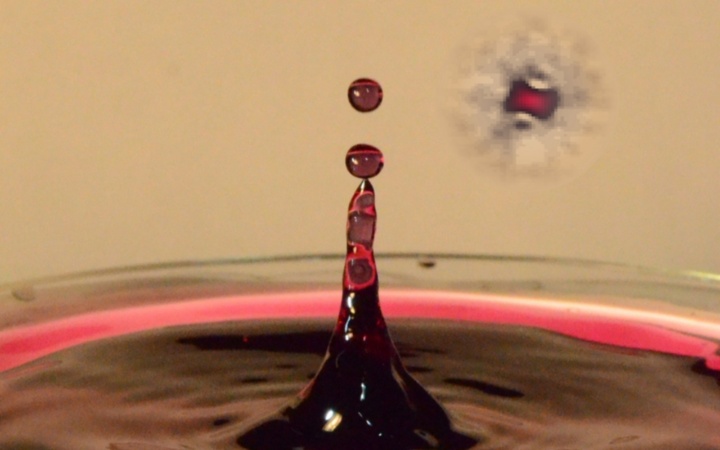Scientists from the University of Stuttgart within the center of integrated quantum science and technology IQ ST accomplished the observation of a new quantum liquid. The journal “Nature” published these results in their recent issue.
Liquids determine our everyday life. Their properties, e.g. surface tension or the existence of stable droplets, are well known as well as the phase transition between liquid and gas that usually happens at ambient temperatures. But what happens if we study this phase transition at temperatures close to the absolute zero point of -273,15 degree celsius? Do liquids or droplets exist at these extreme conditions?
Researchers around Tilman Pfau at the center of integrated quantum science and technology IQ ST studied this question. They cool dysprosium atoms to temperatures as low as a few billionth of a degree above absolute zero. In these conditions, the atoms behave according to the laws of quantum mechanics, and thus form a quantum gas.
100 million times colder und more dilute than water
Based on the results earlier this year [1] they are able to turn this very dilute gas into a liquid, which is a factor of 100 million times colder and more dilute than water. They have demonstrated this transition from gas to liquid by showing that the atoms do not try to occupy the whole volume available but assemble in the form of droplets, which they have studied using a levitation method.
These droplets contain only a few thousand atoms. The stability and existence of these droplets is only possible due to quantum fluctuations that result from Heisenberg’s uncertain principle. Furthermore, their “quantumness” imposes that when these droplets become too small they fully evaporate back into the gas phase.
The renowned journal “Nature” published these observations in their most recent issue. These results open up a new research direction in the physics of cold atoms where the properties of this new quantum liquid will be studied in the future.
Original publication:
Self-bound droplets of a dilute magnetic quantum liquid, Matthias Schmitt, Matthias Wenzel,
Fabian Böttcher, Igor Ferrier-Barbut, Tilman Pfau, Nature, 9
th of November 2016,
http://www.nature.com/nature/journal/v539/n7628/full/nature20126.html
[1] Observing the Rosensweig instability of a quantum ferrofluid, Holger Kadau, Matthias Schmitt, Matthias Wenzel, Clarissa Wink, Thomas Maier, Igor Ferrier-Barbut, Tilman Pfau, Nature, 1 st of February 2016, http://www.nature.com/nature/journal/vaop/ncurrent/full/nature16485.html
Contact:
Prof. Dr. Tilman Pfau, University of Stuttgart, 5. Physikalisches Institut, phone
+49 711 685-68025,
E-mail
Andrea Mayer-Grenu, University of Stuttgart, University Communications, Tel. +49 711 685-82176, E-mail



